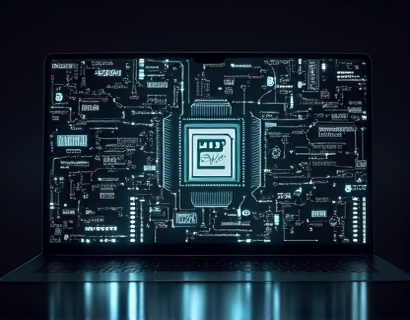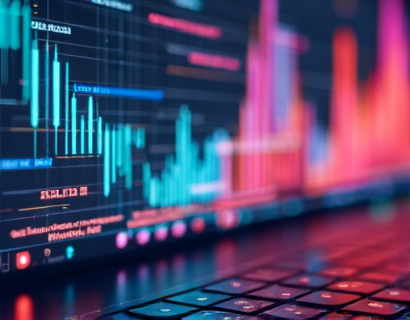AI and Crypto: Revolutionizing Digital Engagement in the Modern Ecosystem
The intersection of artificial intelligence (AI) and cryptocurrency is reshaping the digital landscape, offering unprecedented opportunities for enhancing user engagement and driving growth within digital ecosystems. This article delves into the advanced strategies and AI-driven insights that are transforming the way we interact with digital services, providing a comprehensive guide for tech professionals and enthusiasts interested in the latest innovations.
The integration of AI and cryptocurrency is not just a trend but a fundamental shift in how digital platforms operate. AI technologies, including machine learning, natural language processing, and predictive analytics, are being leveraged to create more intuitive, personalized, and secure user experiences. Meanwhile, cryptocurrency provides a decentralized and transparent means of transaction, empowering users and developers alike. Together, these technologies are revolutionizing digital engagement, making it more seamless, secure, and rewarding.
Enhancing User Interactions with AI
AI-driven solutions are at the forefront of enhancing user interactions within digital ecosystems. One of the primary ways AI achieves this is through personalized experiences. By analyzing vast amounts of user data, AI algorithms can predict user preferences and behaviors, tailoring content and recommendations to individual needs. This level of personalization not only improves user satisfaction but also increases engagement and retention rates.
For instance, AI-powered chatbots are becoming increasingly sophisticated, capable of understanding natural language and providing real-time support to users. These chatbots can handle a wide range of queries, from simple FAQs to complex problem-solving, ensuring that users receive immediate and accurate assistance. This not only enhances the user experience but also reduces the workload on human support teams, allowing them to focus on more critical tasks.
Another significant application of AI in digital ecosystems is content curation. AI algorithms can sift through massive datasets to identify and present the most relevant and engaging content to users. This is particularly useful in platforms like social media and news aggregators, where the sheer volume of content can be overwhelming. By using AI to filter and prioritize content, users are more likely to find what they are looking for, leading to higher engagement and longer session times.
Driving Growth with AI and Cryptocurrency
The combination of AI and cryptocurrency is also driving growth in digital ecosystems by creating new monetization models and incentivizing user participation. Cryptocurrency, with its decentralized nature, offers a transparent and secure way to reward users for their contributions. This is particularly evident in blockchain-based platforms where users can earn tokens for activities such as content creation, sharing, and verification.
AI plays a crucial role in optimizing these monetization models. By analyzing user behavior and preferences, AI can dynamically adjust reward mechanisms to maximize user engagement and participation. For example, AI can identify the most active and valuable users and provide them with exclusive rewards, fostering a sense of community and loyalty. This data-driven approach ensures that the reward system is fair and effective, encouraging more users to participate and contribute to the ecosystem.
Moreover, AI can enhance the security and integrity of cryptocurrency transactions. Machine learning algorithms can detect and prevent fraudulent activities by identifying patterns and anomalies in transaction data. This not only protects users but also builds trust in the digital ecosystem, attracting more participants and driving growth.
AI-Driven Insights for Strategic Decision Making
For digital ecosystem operators, AI provides invaluable insights that can inform strategic decision-making. By leveraging AI analytics, businesses can gain deep insights into user behavior, market trends, and competitive landscapes. These insights enable data-driven decisions that can give a significant edge in a competitive tech environment.
One key area where AI-driven insights are transformative is in market research. Traditional market research methods are time-consuming and often rely on limited data sources. AI, on the other hand, can process and analyze vast amounts of data from various sources, including social media, forums, and transaction records. This comprehensive analysis provides a more accurate and up-to-date understanding of market dynamics, helping businesses to identify new opportunities and mitigate risks.
AI can also optimize marketing strategies by predicting user responses to different campaigns. By simulating various scenarios and analyzing the potential outcomes, AI can recommend the most effective marketing approaches. This not only saves time and resources but also ensures that marketing efforts are aligned with user preferences, leading to higher conversion rates and better ROI.
Security and Trust in AI and Crypto Ecosystems
Security is a paramount concern in both AI and cryptocurrency domains. The integration of these technologies requires robust security measures to protect user data and ensure the integrity of transactions. AI can play a critical role in enhancing security by detecting and mitigating threats in real-time.
For instance, AI-powered security systems can monitor network traffic and user activities to identify suspicious patterns indicative of cyber attacks. These systems can automatically trigger defensive measures, such as isolating affected systems or alerting security teams. This proactive approach to security helps to build trust among users, a crucial factor in the adoption and success of digital ecosystems.
Cryptocurrency, with its inherent transparency and immutability, also contributes to a secure environment. Blockchain technology ensures that transactions are recorded in a tamper-proof manner, reducing the risk of fraud and data breaches. When combined with AI-driven security measures, the overall security of the ecosystem is significantly enhanced, making it an attractive option for users and businesses alike.
Future Trends and Opportunities
The future of AI and cryptocurrency in digital ecosystems is promising, with several emerging trends and opportunities on the horizon. One such trend is the rise of decentralized applications (dApps) powered by AI. These dApps leverage the strengths of both technologies to create autonomous, secure, and user-centric applications. For example, AI-driven dApps can offer personalized financial services, such as automated trading and investment advice, all while ensuring data privacy and security.
Another exciting development is the integration of AI with the Internet of Things (IoT) within digital ecosystems. AI can process and analyze the vast amounts of data generated by IoT devices, providing actionable insights and automating processes. This synergy can lead to smarter and more efficient systems, from smart homes to industrial IoT applications.
Furthermore, the convergence of AI and cryptocurrency is paving the way for new economic models, such as decentralized finance (DeFi). DeFi platforms use blockchain and AI to offer financial services like lending, borrowing, and trading without intermediaries. These platforms are not only more transparent and secure but also more accessible, democratizing financial opportunities for a broader audience.
Conclusion
The integration of AI and cryptocurrency is revolutionizing digital engagement, offering advanced solutions that enhance user interactions, drive growth, and ensure security. By leveraging AI-driven insights and the decentralized nature of cryptocurrency, digital ecosystems can create more personalized, secure, and rewarding experiences for users. As these technologies continue to evolve, the potential for innovation and transformation in the tech landscape is immense. For tech professionals and enthusiasts, embracing these advancements is key to staying ahead in the competitive digital world.











































